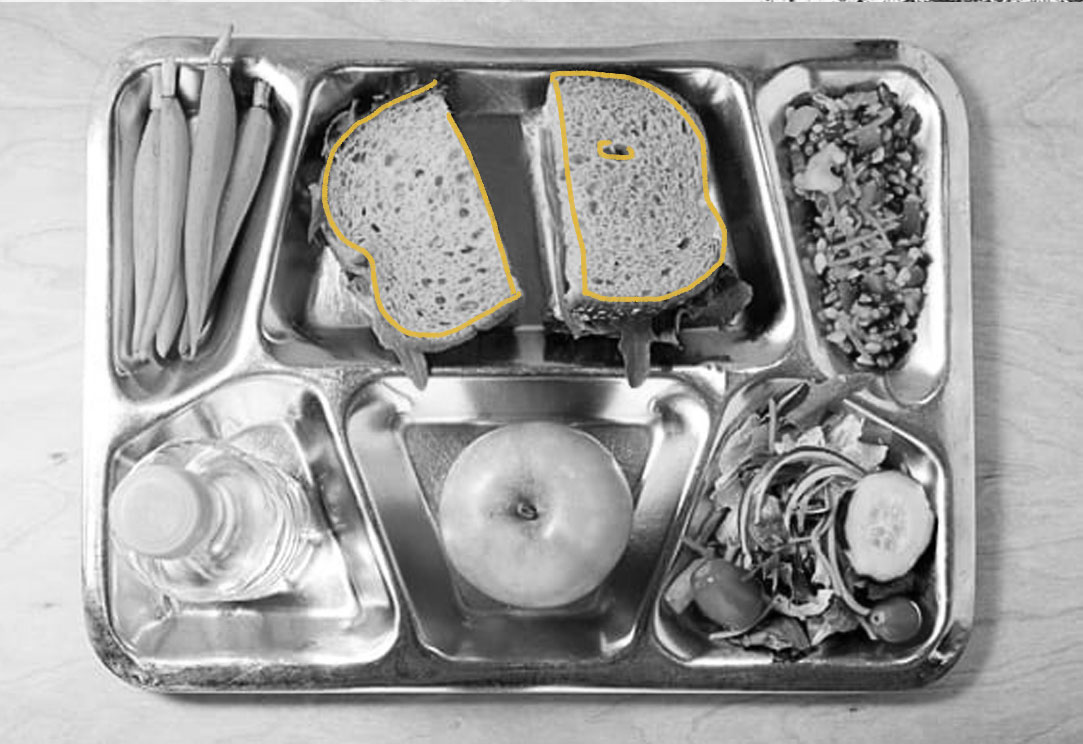Philadelphia and Boston were the first major cities in the United States to actively implement a school lunch program. Philadelphia began serving penny lunches at one school in 1894. Eventually, a lunch committee was added to the Home and School League and the program was successfully extended to eight other schools. In Boston, the Women’s Educational and Industrial Union began serving hot lunches to high schools from a centrally located kitchen. In January 1910, Home Economics classes in Boston began an experimental program in which they served an early lunch to elementary school students three days a week. (On the off days, a simple lunch of milk and sandwiches was provided to the children.) Without a lunchroom, the children ate at their desks. Throughout the early part of the 20th century, other major cities began implementing their own school lunch programs. However, rural schools faced a problem; there was rarely space allotted for developing a kitchen and/or dining area, so serving warm meals posed an issue. Some teachers took advantage of the stoves used to heat the classrooms to heat soups. In Wisconsin, the “pint jar” method became quite popular — students would bring pint jars filled with reheatable food from home like macaroni, soup, or cocoa, and teachers would place them in buckets of water on top of the classroom stove. By the time lunch rolled around, the meals would be warm. Throughout the 1920s, Parent-Teacher Associations became involved and helped expand school lunch programs, often going so far as to donate pots, pans, and even small stoves. But growth was uneven and slow. Then in 1946, the school lunch program finally gained official support when President Harry S. Truman signed the National School Lunch Act, authored by Senator Richard B. Russell Jr. But how to feed so many children? As jobs began moving further away from where workers lived, simply going home for the midday meal became impractical. The concept of the cafeteria originally arose to meet the needs of these workers. The first of these was New York’s Exchange Buffet, which opened during the 1880s and served food buffet-style to men only. Later, brothers William and Samuel Childs opened several lunchrooms (all known as Childs Restaurant) where patrons would line up and push their trays along counters as they perused the food offerings and took portions of what caught their eye. This cafeteria model quickly became successful and spread across America rapidly. It was particularly popular in California, earning the state the nickname “The Cafeteria Belt.” Interestingly, the standard offerings weren’t very different from what we would think of today as “cafeteria food” — they included hamburgers, French fries, spaghetti, boiled vegetables, slices of pie, and Jell-O. Schools eventually adopted this cafeteria model, since it offered a practical way to serve large groups at once. But recently, the healthfulness of school lunch offerings — which many low-income children depend on for sustenance — has been called into question; notably, the Obama administration (spearheaded by First Lady Michelle Obama) worked to increase the nutritional value of these meals in the 2010s. Today, school lunches remain an integral part of school life in America.

Your go-to guide for weird history facts
Subscribe to the FREE daily email that makes learning about history fun.


